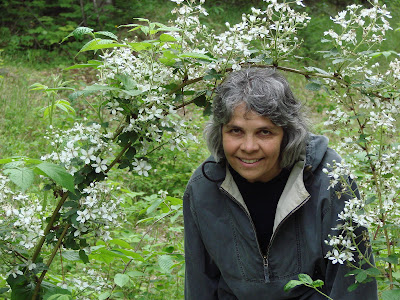
Great Blue Herons typically nest in colonies, which is why I was surprised to find but a single nest in this beaver pond. Some years ago there were about a half dozen nests here, but the following year there were only two or three and after that, none for several years. Perhaps now that there are no logging operations in the area and the site has become quieter, more herons will return.


Herons, unlike sandhill cranes, do not build their nests on the ground, but up in tall trees, often above water, and typically in secluded places. A group of nests would be termed a rookery, but I don't imagine you could apply that term to a lone nest.

...and walks down the branch to the nest and after moving the eggs with its feet, settles down to brood. I of course, could not see the eggs, but I surmised that they had not hatched yet by the way the bird shuffled its feet. Eggs need to be turned regularly to ensure that the embryos are evenly heated and do not adhere to the egg shells.

...and walks down the branch to the nest and after moving the eggs with its feet, settles down to brood. I of course, could not see the eggs, but I surmised that they had not hatched yet by the way the bird shuffled its feet. Eggs need to be turned regularly to ensure that the embryos are evenly heated and do not adhere to the egg shells.
Unlike cranes, herons hold their necks in an S- shaped curve much of the time, and always when flying. The curve also serves the same purpose as a rattlesnake's; herons can snap out their heads at blinding speed to spear frogs and fish. You wouldn't want to tangle with the business end of this bird.




No comments:
Post a Comment